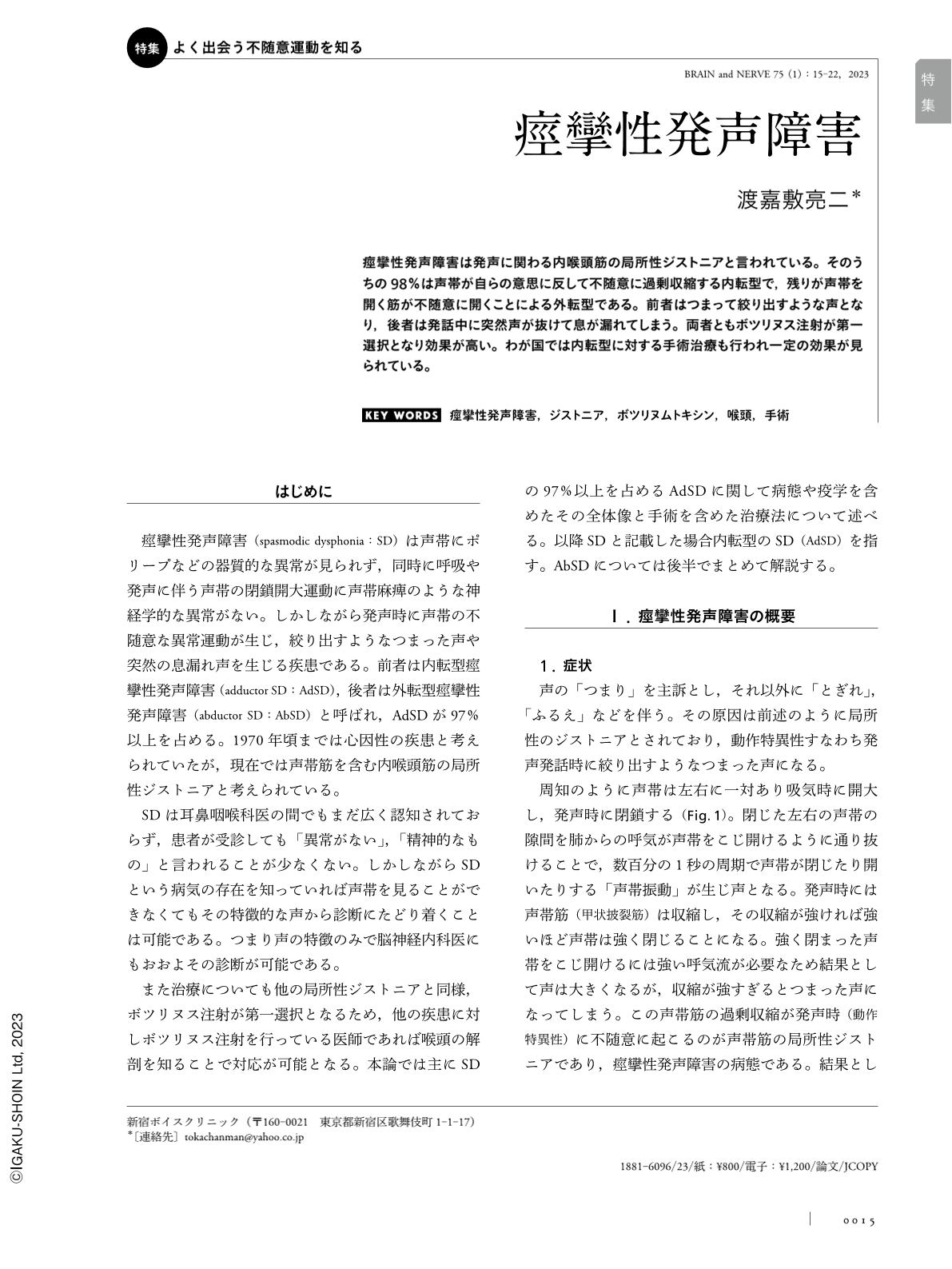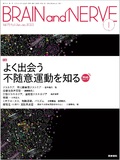Japanese
English
- 有料閲覧
- Abstract 文献概要
- 1ページ目 Look Inside
- 参考文献 Reference
痙攣性発声障害は発声に関わる内喉頭筋の局所性ジストニアと言われている。そのうちの98%は声帯が自らの意思に反して不随意に過剰収縮する内転型で,残りが声帯を開く筋が不随意に開くことによる外転型である。前者はつまって絞り出すような声となり,後者は発話中に突然声が抜けて息が漏れてしまう。両者ともボツリヌス注射が第一選択となり効果が高い。わが国では内転型に対する手術治療も行われ一定の効果が見られている。
*本論文中に掲載されている二次元コード部分をクリックすると,関連する動画を視聴することができます(公開期間:2026年1月31日まで公開)。
Abstract
Spasmodic dysphonia (SD) is a chronic voice disorder characterized by excessive or inappropriate contraction of laryngeal muscles during speech. SD manifests as excessive glottic closure (adductor type) or sudden opening of the vocal folds (abductor type). Strained or strangled voice is the main symptom of adductor type SD, while abductor type SD presents with a breathy or absent voice. Adductor type SD accounts for 97% of all SD cases and 70% display abnormal contractions of extra laryngeal muscles. SD is currently understood to be a focal dystonia of inner laryngeal muscle during speech. Injection of botulinum toxin into laryngeal muscles is the primary treatment for SD, similar to other dystonia diseases. As the effects of botulinum toxin last for around three months, patients need repeated injections. There are two kind of surgical procedures which aim to achieve permanent emission, namely type 2 thyroplasty (TP2) and bilateral thyroarytenoid muscle myectomy (TAM). Both of these are effective and over 50% of patients can become symptom-free. However, in some cases, patient voices can become breathy and pitch ranges are reduced. For abductor type SD, there are no effective treatments apart from botulinum toxin injections into posterior cricoarytenoid muscles which open the vocal folds.

Copyright © 2023, Igaku-Shoin Ltd. All rights reserved.


